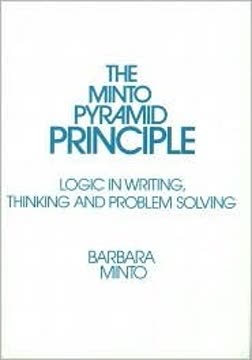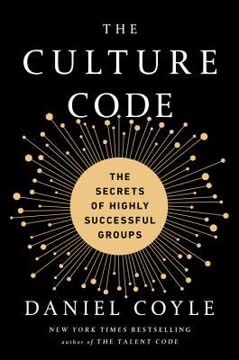Key Takeaways
1. Trust is the foundation of effective client relationships
The more your clients trust you, the more they will reach for your advice.
Trust unlocks opportunities. When clients trust you, they are more likely to seek your guidance, accept your recommendations, and involve you in complex, strategic issues. Trust leads to better information sharing, improved collaboration, and a higher tolerance for mistakes. It also results in more referrals and long-term relationships.
Building trust is a process. It involves demonstrating credibility, reliability, intimacy, and a low level of self-orientation. Credibility comes from expertise and presence, reliability from consistent actions, intimacy from emotional connection, and low self-orientation from prioritizing the client's interests. These elements combine to create a trust equation: (Credibility + Reliability + Intimacy) / Self-Orientation = Trustworthiness.
2. Develop key attributes of trusted advisors
Who you are shouts so loud I cannot hear what you say.
Focus on the client. Trusted advisors have a genuine interest in understanding and helping their clients. They possess:
- Self-confidence to listen without prejudging
- Curiosity to inquire without assuming answers
- Willingness to see the client as an equal partner
- Ego strength to subordinate their own needs
Demonstrate professionalism and integrity. Trusted advisors:
- Consistently prioritize the client's best interests
- View methodologies as means to an end, not ends in themselves
- Believe in the accumulation of quality experiences
- Maintain a balance between business and personal life
3. Master the art of listening and understanding
Listening to earn the right is very much an emotional as well as a rational process.
Active listening is crucial. Effective listening involves more than just hearing words. It requires:
- Focusing entirely on the speaker
- Paraphrasing to ensure understanding
- Identifying unspoken emotions and concerns
- Asking open-ended questions for clarity
Empathy builds connection. Demonstrate genuine understanding by:
- Acknowledging the client's feelings
- Putting yourself in their shoes
- Validating their perspective, even if you disagree
- Using reflective statements to show you've heard and understood
4. Frame issues to provide clarity and insight
Framing is the act of crystallizing and encapsulating the client's complex issues into a problem definition that provides both insight and a fresh way of thinking about the problem.
Clarify complex problems. Effective framing involves:
- Distilling issues to their essential components
- Providing new perspectives on familiar challenges
- Balancing rational analysis with emotional understanding
- Articulating the core "gut" issues that may be hidden
Use emotional framing when necessary. Sometimes, the biggest obstacles are emotional or political. Techniques for emotional framing include:
- Naming and claiming: openly addressing unspoken issues
- Acknowledging the difficulty of raising sensitive topics
- Taking responsibility for broaching uncomfortable subjects
- Using carefully chosen language to create a safe space for discussion
5. Envision and commit to solutions collaboratively
Envisioning is what we tried to do with you in Chapter 1, the Sneak Preview. We asked you to imagine what it would be like to be trusted by your clients, and whether you wanted those benefits.
Joint envisioning creates buy-in. Work with clients to:
- Imagine concrete, detailed future states
- Explore the benefits and implications of different scenarios
- Address potential obstacles and concerns
- Align on a shared vision of success
Secure genuine commitment. Ensure the client understands and is willing to do what's necessary by:
- Discussing potential challenges and risks openly
- Clarifying roles and responsibilities
- Setting realistic expectations and timelines
- Confirming the client's emotional readiness to proceed
6. Balance technical expertise with emotional intelligence
Excellence in advice giving requires not only the right attitude, but also a careful attention to language.
Technical mastery is not enough. While expertise is crucial, it must be coupled with:
- Ability to communicate complex ideas simply
- Sensitivity to the client's emotional state
- Skill in managing interpersonal dynamics
- Awareness of organizational politics and culture
Develop emotional intelligence. Enhance your effectiveness by:
- Recognizing and managing your own emotions
- Reading and responding to others' emotional cues
- Adapting your communication style to different personalities
- Building rapport through genuine connection
7. Build trust through consistent actions and integrity
To earn a relationship, you must go first. You must give a favor to earn a favor.
Actions speak louder than words. Demonstrate trustworthiness through:
- Keeping promises, no matter how small
- Being punctual and prepared for every interaction
- Following through on commitments consistently
- Admitting mistakes and taking responsibility
Maintain impeccable integrity. Never compromise your values by:
- Telling the truth, even when it's difficult
- Avoiding exaggeration or misrepresentation
- Respecting confidentiality and boundaries
- Putting the client's interests before your own
8. Manage client expectations and deliver value
Clients like Ms. Pisa's are the best clients because they understand the value of what you provide.
Set clear expectations. From the outset:
- Define project scope, deliverables, and timelines
- Discuss potential challenges and how they'll be addressed
- Clarify roles and responsibilities for all parties
- Establish communication protocols and frequency
Consistently add value. Go beyond the basic deliverables by:
- Proactively sharing relevant insights and information
- Offering creative solutions to emerging problems
- Connecting clients with valuable resources or contacts
- Demonstrating a deep understanding of their business and industry
9. Cross-sell by leveraging existing trust relationships
Trust is mainly personal, not institutional, and is not very transferable.
Navigate cross-selling carefully. When introducing new services or colleagues:
- Ensure the offering genuinely benefits the client
- Invest time in understanding the new area of expertise
- Introduce colleagues thoughtfully, emphasizing their specific value
- Maintain your role as a trusted advisor throughout the process
Address unspoken concerns. Recognize and address potential client reservations about:
- Your expertise in the new area
- The qualifications of your colleagues
- How the new service fits with their overall needs
- Potential conflicts of interest or hidden agendas
10. Continuously invest in relationship building
Relationships cannot be taken for granted.
Stay engaged beyond current projects. Maintain connections by:
- Regularly checking in without an agenda
- Sharing relevant industry insights or news
- Inviting clients to events or thought leadership sessions
- Offering "pro bono" advice or quick consultations
Create institutional relationships. For larger clients:
- Develop a team of professionals who can serve various needs
- Establish multiple points of contact within the client organization
- Ensure consistency in service quality across all interactions
- Coordinate efforts to provide seamless, integrated solutions
Last updated:
FAQ
What's The Trusted Advisor about?
- Focus on Trust: The Trusted Advisor by David H. Maister emphasizes the critical role of trust in professional relationships, especially between advisors and clients.
- Building Relationships: It provides a roadmap for developing strong, trust-based relationships, highlighting that technical expertise alone is insufficient.
- Framework for Trust: The book introduces a structured approach to building trust, including the Trust Equation and five stages of trust development.
Why should I read The Trusted Advisor?
- Enhance Professional Effectiveness: The book offers insights to improve your ability to connect with clients and build lasting relationships.
- Practical Techniques: It provides actionable advice and techniques that can be immediately applied to enhance trust and communication.
- Real-World Examples: Filled with anecdotes and case studies, the book illustrates principles in a relatable and understandable manner.
What are the key takeaways of The Trusted Advisor?
- Trust is Earned: Trust must be actively earned through consistent actions and behaviors, not assumed based on credentials.
- Trust Equation: Introduces the Trust Equation, consisting of credibility, reliability, intimacy, and self-orientation.
- Stages of Trust Development: Outlines five stages: Engage, Listen, Frame, Envision, and Commit, each requiring specific skills.
What is the Trust Equation in The Trusted Advisor?
- Four Components: Defined as (Credibility + Reliability + Intimacy) / Self-Orientation, each component affects perceived trustworthiness.
- Credibility: Relates to the advisor's expertise and knowledge, essential for establishing initial trust.
- Reliability and Intimacy: Reliability involves dependability, while intimacy refers to emotional closeness and understanding.
How do I earn trust according to The Trusted Advisor?
- Genuine Interest: Show care for the client's needs through active listening and insightful questions.
- Consistency and Reliability: Deliver on promises consistently to build confidence and reinforce trustworthiness.
- Emotional Engagement: Establish emotional connections by being open and approachable, sharing relevant experiences.
What are the five stages of trust development in The Trusted Advisor?
- Engage: Capture the client's attention and demonstrate worthiness to discuss their issues.
- Listen: Actively listen to fully understand the client's concerns, earning the right to provide insights.
- Frame: Clarify and articulate the client's issues, providing new perspectives for better understanding.
What is the importance of listening in The Trusted Advisor?
- Active Engagement: Listening engages clients and makes them feel valued, essential for building trust.
- Earning the Right: Demonstrates understanding and empathy, making clients more likely to accept advice.
- Clarifying Issues: Helps identify underlying issues, leading to more effective problem-solving.
How can I improve my listening skills as suggested in The Trusted Advisor?
- Reflective Listening: Summarize what the client has said to confirm understanding and show engagement.
- Open-Ended Questions: Encourage deeper conversations by asking questions that require more than yes or no answers.
- Be Present: Eliminate distractions to focus fully on the client, demonstrating respect and commitment.
What is the role of intimacy in building trust according to The Trusted Advisor?
- Emotional Closeness: Intimacy involves creating emotional closeness, allowing open discussions about sensitive issues.
- Mutual Risk-Taking: Requires sharing personal insights and vulnerabilities, deepening the relationship.
- Difficult Conversations: Enables addressing challenging topics more effectively, fostering honest discussions.
How does The Trusted Advisor define emotional framing?
- Naming and Claiming: Techniques to address difficult emotions and situations openly, facilitating honest conversations.
- Acknowledgment of Feelings: Emphasizes recognizing clients' emotional states for better understanding and resolution.
- Risk-Taking: Involves addressing uncomfortable topics, leading to stronger relationships.
What are some common client types discussed in The Trusted Advisor?
- “Just the Facts, Ma’am”: Prefers straightforward, factual communication; advisors should focus on clarity.
- “I’ll Get Back to You”: Cautious clients who take time to decide; provide information and support without pressure.
- “You Don’t Understand”: Feels misunderstood; advisors should seek to understand their unique context and show empathy.
How does The Trusted Advisor suggest managing client expectations?
- Clear Communication: Articulate roles and responsibilities clearly to prevent misunderstandings and build trust.
- Set Realistic Goals: Ensure clients have realistic expectations about outcomes, discussing potential challenges upfront.
- Regular Check-Ins: Maintain open communication to manage expectations and address concerns as they arise.
Review Summary
The Trusted Advisor is highly regarded as a valuable resource for professionals in consulting and client-facing roles. Readers appreciate its practical advice on building trust, effective communication, and developing strong client relationships. Many find the book's emphasis on emotional intelligence and interpersonal skills particularly insightful. While some reviewers note that the content can be repetitive and dated, most consider it essential reading for those in professional services. The book's use of real-life examples and actionable tips is frequently praised, though some criticize its focus on a narrow demographic.
Similar Books










Download PDF
Download EPUB
.epub digital book format is ideal for reading ebooks on phones, tablets, and e-readers.






